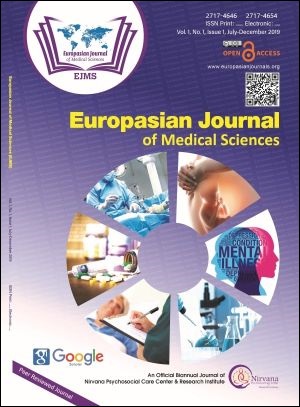Association between Sella Turcica Bridging and Hypodontia - a Radiographic Study
Keywords:
Hypodontia, Orthodontic patients, Radiographic study, Sella turcica bridgingAbstract
Introduction: Introduction: The bridging of the sella turcica and dental anomalies have common embryonic origins and underlying genetic basis. Many studies have linked sella turcica bridging to developmental syndromes affecting the craniofacial region, and local dental anomalies such as tooth transposition and palatal canine impaction. The purpose of this study was to determine the association between the bridging of the sella turcica and hypodontia.
Methods: In this cross-sectional analytical study, the clinical records along with lateral cephalograms and orthopantomograms of 40 hypodontic patients as study sample (12 males and 28 females; mean age 13.9±2.5 years) and of 120 on hypodontic patients as control groups (58 males and 62 females; mean age 14.1±1.8 years) matched for age and gender to the study sample who came for orthodontic treatment from 2016-2018, were collected from archives of an orthodontic unit of Tribhuvan University Teaching Hospital and one private orthodontic clinic. Panoramic radiographs were evaluated for hypodontia. To quantify the extent of a sella turcica bridge on lateral cephalogram, the contour of the pituitary fossa from the tip of the dorsum sellae to the tuberculum sella was traced and extent of bridging was categorized by standardizing scoring scale using the comparative measurement of sella length and diameter.
Results: The presence of complete bridging (17.5%) and partial bridging (55%) in patients with hypodontia was more than complete bridging (5%) and partial bridging (37.5%) in patients without hypodontia (controls). The association between the degree of bridging and hypodontia was statistically significant according to chi-square statistics (p=0.001). There were no statistical differences between the degree of calcification and gender (p=0.616).
Conclusion: Sella turcica bridging is significantly associated with hypodontia. There is no dependence between the degree of calcification and gender. As the sella turcica bridge appears early in life, it should alert clinicians as a useful diagnostic predictor to the possible development of tooth anomalies later in life.
Downloads
Downloads
Published
How to Cite
Issue
Section
License
The author(s) retain the ownership of the copyrights for their work published in EJMS without any restrictions. Upon submission, the author(s) grants EJMS a license to publish, including to display, store, copy, and reuse the published content.
License to Publish
By submitting a manuscript to EJMS, the author(s) grant the journal a non-exclusive license to:
- Publish and distribute the content in all formats, media, and platforms (both existing and future), while identifying EJMS as the original publisher.
- Reproduce, display, and store the content in both print and online formats, including institutional and digital repositories.
- Translate, adapt, and summarize the work, including reprints, extracts, and abstracts.
- Develop derivative works based on the original content.
- Include the work in electronic databases and provide links to third-party materials.
Creative Commons Licensing
In addition to EJMS’s publishing rights, authors grant third parties the right to use, share, and distribute their work under the Creative Commons Attribution 4.0 (CC BY 4.0) International License. This allows unrestricted use of the content, provided proper attribution is given to the original author(s) and the journal.

